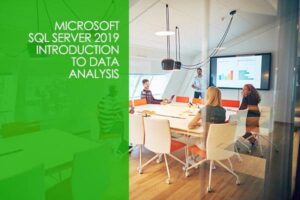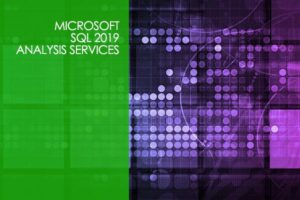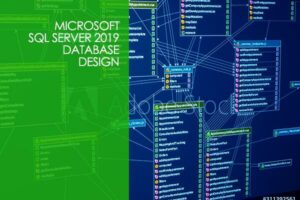This course will discuss the responsibilities and functions of a data analyst. Which includes the various methods and best practices that are in line with business and technical requirements for modeling, visualizing, and analyzing data with Power BI. The course will also show how to access and process data from a range of data sources including both relational and non-relational data. This course will also explore how to implement proper security standards and policies across the Power BI spectrum including datasets and groups. The course will also discuss how to manage and deploy reports and dashboards for sharing and content distribution.
This course provides students with the technical skills required to write basic Transact-SQL queries for Microsoft SQL Server. You will learn how to write queries that return data from tables as well as create, update, or delete data in a database. These queries will allow filtering and sorting and effectively use the various data types provided by SQL Server. This course also covers the use of dynamic tables of various sorts which can allow a more sophisticated SQL user to hide implementation details from other end users accessing data from reporting tools. Finally, the course will provide details on the what and how of error handling and transaction management. This course is the foundation for all SQL Server-related disciplines; namely, Database Administration, Database Development and Business Intelligence.
Analysis Services is a combination of two analytical engines (VertiPaq for multidimensional cubes and Data Mining and xVelocity for Tabular Data Models) used in decision support and business analytics. It provides enterprise-grade semantic data model capabilities for business intelligence (BI), data analysis, and reporting applications such as Power BI, Excel, Reporting Services, and other data visualization tools. This course provides a full introduction to the use of both of these engines in an enterprise environment.
This course focuses on skills necessary to architect well-performing databases in SQL Server. It covers the principles and the practical tools necessary to understand and create all of the objects you would need to have a complete database. This includes a discussion of tables, data integrity, and indexes. As well as basic programming, file storage, and full-text searching. One of the primary benefits of commercial-grade databases is the availability of indexes to speed lookups. You will learn the benefits and the requirements for generating useful indexes in both OLTP (transactional) and OLAP (reporting) databases. Another major benefit of business-focused RDBMS (Relational Database Management Systems) is the use of enforced relationships and constraints. This course will cover all the standard techniques to maintain consistent quality data in your database using referential integrity and various types of automatic data validations. One way of increasing both security and performance in a database is using stored procedures, functions, and triggers. You will learn what each of these objects is and how to write the T-SQL code to generate them.






